Olimpia Splendid Sherpa AQUADUE OS-CETNH48EI Owner's manual
- Category
- Heat pumps
- Type
- Owner's manual
Page is loading ...
Page is loading ...
Page is loading ...
Page is loading ...
Page is loading ...
Page is loading ...

7
18
17
65
105
140
180
18
68
136
184
1116
180
115
65
500
288
280
25
25
25
8
7
6
5
4
3
2
1
80
p/kPa
Q/m
3
/h
Q/Igpm
H/m
P
1
/W
70
60
50
40
30
20
10
0
10
0 0,4 0,8 1,2 1,6 2,0
0
23 4675
4812 16 24 2820
Q/m
3
/h
10234 675
0
150
100
50
0
Q/l/s
max.
8
7
6
5
4
3
2
1
80
p/kPa
Q/m
3
/h
Q/Igpm
H/m
P
1
/W
70
60
50
40
30
20
10
0
10
0 0,4 0,8 1,2 1,62,0
0
23 4675
4812 16 24 2820
Q/m
3
/h
10234 675
0
150
100
50
0
Q/l/s
max.
6
5
4
3
2
1
p/kPa
Q/m
3
m/h
Q/Igpm
H/m
P
1
/W
50
60
40
30
20
10
0
0
00.40.20.6 0.8
0
246108
Q/m
3
m/h
00.5 1.01.5 2.02.5 3.0
0
40
20
0
Q/l/s
max.
∆p-c (constant) ∆p-v (variable)
0.51.0 1.52.0 2.53.0
∆p-c
max.
∆p-c
max.
∆p-c
max.
8m
7m
6m
5m
4m
3m
2m
1m
8m
7m
6m
5m
4m
3m
2m
Wilo-Stratos-Para
25/1-8,30/1-8
1-230V-Rp1, Rp1¼
Wilo-Stratos-Para
25/1-8,30/1-8
1-230V-Rp1, Rp1¼
Wilo-Yonos PARA RS
15/6, 25/6, 30/6
1~230V - Rp½, Rp1, Rp1¼
8
7
6
5
4
3
2
1
80
p/kPa
Q/m
3
/h
Q/Igpm
H/m
P
1
/W
70
60
50
40
30
20
10
0
10
0 0,4 0,8 1,2 1,6 2,0
0
23 4675
4812 16 24 2820
Q/m
3
/h
10234 675
0
150
100
50
0
Q/l/s
max.
8
7
6
5
4
3
2
1
80
p/kPa
Q/m
3
/h
Q/Igpm
H/m
P
1
/W
70
60
50
40
30
20
10
0
10
0 0,4 0,8 1,2 1,62,0
0
23 4675
4812 16 24 2820
Q/m
3
/h
10234 675
0
150
100
50
0
Q/l/s
max.
6
5
4
3
2
1
p/kPa
Q/m
3
m/h
Q/Igpm
H/m
P
1
/W
50
60
40
30
20
10
0
0
00.40.20.6 0.8
0
246108
Q/m
3
m/h
00.5 1.01.5 2.02.5 3.0
0
40
20
0
Q/l/s
max.
∆p-c (constant) ∆p-v (variable)
0.51.0 1.52.0 2.53.0
∆p-c
max.
∆p-c
max.
∆p-c
max.
8m
7m
6m
5m
4m
3m
2m
1m
8m
7m
6m
5m
4m
3m
2m
Wilo-Stratos-Para
25/1-8,30/1-8
1-230V-Rp1, Rp1¼
Wilo-Stratos-Para
25/1-8,30/1-8
1-230V-Rp1, Rp1¼
Wilo-Yonos PARA RS
15/6, 25/6, 30/6
1~230V - Rp½, Rp1, Rp1¼
8
7
6
5
4
3
2
1
80
p/kPa
Q/m
3
/h
Q/Igpm
H/m
P
1
/W
70
60
50
40
30
20
10
0
10
0 0,4 0,8 1,2 1,6 2,0
0
23 4675
4812 16 24 2820
Q/m
3
/h
10234 675
0
150
100
50
0
Q/l/s
max.
8
7
6
5
4
3
2
1
80
p/kPa
Q/m
3
/h
Q/Igpm
H/m
P
1
/W
70
60
50
40
30
20
10
0
10
0 0,4 0,8 1,2 1,62,0
0
23 4675
4812 16 24 2820
Q/m
3
/h
10234 675
0
150
100
50
0
Q/l/s
max.
6
5
4
3
2
1
p/kPa
Q/m
3
m/h
Q/Igpm
H/m
P
1
/W
50
60
40
30
20
10
0
0
00.40.20.6 0.8
0
246108
Q/m
3
m/h
00.5 1.01.5 2.02.5 3.0
0
40
20
0
Q/l/s
max.
∆p-c (constant) ∆p-v (variable)
0.51.0 1.52.0 2.53.0
∆p-c
max.
∆p-c
max.
∆p-c
max.
8m
7m
6m
5m
4m
3m
2m
1m
8m
7m
6m
5m
4m
3m
2m
Wilo-Stratos-Para
25/1-8,30/1-8
1-230V-Rp1, Rp1¼
Wilo-Stratos-Para
25/1-8,30/1-8
1-230V-Rp1, Rp1¼
Wilo-Yonos PARA RS
15/6, 25/6, 30/6
1~230V - Rp½, Rp1, Rp1¼
8
7
6
5
4
3
2
1
80
p/kPa
Q/m
3
/h
Q/Igpm
H/m
P
1
/W
70
60
50
40
30
20
10
0
10
0 0,4 0,8 1,2 1,6 2,0
0
23 4675
4812 16 24 2820
Q/m
3
/h
10234 675
0
150
100
50
0
Q/l/s
max.
8
7
6
5
4
3
2
1
80
p/kPa
Q/m
3
/h
Q/Igpm
H/m
P
1
/W
70
60
50
40
30
20
10
0
10
0 0,4 0,8 1,2 1,62,0
0
23 4675
4812 16 24 2820
Q/m
3
/h
10234 675
0
150
100
50
0
Q/l/s
max.
6
5
4
3
2
1
p/kPa
Q/m
3
m/h
Q/Igpm
H/m
P
1
/W
50
60
40
30
20
10
0
0
00.40.20.6 0.8
0
246108
Q/m
3
m/h
00.5 1.01.5 2.02.5 3.0
0
40
20
0
Q/l/s
max.
∆p-c (constant) ∆p-v (variable)
0.51.0 1.52.0 2.53.0
∆p-c
max.
∆p-c
max.
∆p-c
max.
8m
7m
6m
5m
4m
3m
2m
1m
8m
7m
6m
5m
4m
3m
2m
Wilo-Stratos-Para
25/1-8,30/1-8
1-230V-Rp1, Rp1¼
Wilo-Stratos-Para
25/1-8,30/1-8
1-230V-Rp1, Rp1¼
Wilo-Yonos PARA RS
15/6, 25/6, 30/6
1~230V - Rp½, Rp1, Rp1¼
8
7
6
5
4
3
2
1
80
p/kPa
Q/m
3
/h
Q/Igpm
H/m
P
1
/W
70
60
50
40
30
20
10
0
10
0 0,4 0,8 1,2 1,6 2,0
0
23 4675
4812 16 24 2820
Q/m
3
/h
10234 675
0
150
100
50
0
Q/l/s
max.
8
7
6
5
4
3
2
1
80
p/kPa
Q/m
3
/h
Q/Igpm
H/m
P
1
/W
70
60
50
40
30
20
10
0
10
0 0,4 0,8 1,2 1,62,0
0
23 4675
4812 16 24 2820
Q/m
3
/h
10234 675
0
150
100
50
0
Q/l/s
max.
6
5
4
3
2
1
p/kPa
Q/m
3
m/h
Q/Igpm
H/m
P
1
/W
50
60
40
30
20
10
0
0
00.40.20.6 0.8
0
246108
Q/m
3
m/h
00.5 1.01.5 2.02.5 3.0
0
40
20
0
Q/l/s
max.
∆p-c (constant) ∆p-v (variable)
0.51.0 1.52.0 2.53.0
∆p-c
max.
∆p-c
max.
∆p-c
max.
8m
7m
6m
5m
4m
3m
2m
1m
8m
7m
6m
5m
4m
3m
2m
Wilo-Stratos-Para
25/1-8,30/1-8
1-230V-Rp1, Rp1¼
Wilo-Stratos-Para
25/1-8,30/1-8
1-230V-Rp1, Rp1¼
Wilo-Yonos PARA RS
15/6, 25/6, 30/6
1~230V - Rp½, Rp1, Rp1¼
8
7
6
5
4
3
2
1
80
p/kPa
Q/m
3
/h
Q/Igpm
H/m
P
1
/W
70
60
50
40
30
20
10
0
10
0 0,4 0,8 1,2 1,6 2,0
0
23 4675
4812 16 24 2820
Q/m
3
/h
10234 675
0
150
100
50
0
Q/l/s
max.
8
7
6
5
4
3
2
1
80
p/kPa
Q/m
3
/h
Q/Igpm
H/m
P
1
/W
70
60
50
40
30
20
10
0
10
0 0,4 0,8 1,2 1,62,0
0
23 4675
4812 16 24 2820
Q/m
3
/h
10234 675
0
150
100
50
0
Q/l/s
max.
6
5
4
3
2
1
p/kPa
Q/m
3
m/h
Q/Igpm
H/m
P
1
/W
50
60
40
30
20
10
0
0
00.40.20.6 0.8
0
246108
Q/m
3
m/h
00.5 1.01.5 2.02.5 3.0
0
40
20
0
Q/l/s
max.
∆p-c (constant) ∆p-v (variable)
0.51.0 1.52.0 2.53.0
∆p-c
max.
∆p-c
max.
∆p-c
max.
8m
7m
6m
5m
4m
3m
2m
1m
8m
7m
6m
5m
4m
3m
2m
Wilo-Stratos-Para
25/1-8,30/1-8
1-230V-Rp1, Rp1¼
Wilo-Stratos-Para
25/1-8,30/1-8
1-230V-Rp1, Rp1¼
Wilo-Yonos PARA RS
15/6, 25/6, 30/6
1~230V - Rp½, Rp1, Rp1¼
A B
C
Page is loading ...

9
22
23
OS-CEBSH24EI OS-CEBCH36EI OS-CEINH48EI OS-CETNH48EI OS-CEINH60EI OS-CETNH60EI
A V/ph/Hz 220-240/1/50 220-240/1/50 220-240/1/50 380-415/3+N/50 220-240/1/50 380-415/3+N/50
B kW 3,0 4,8 6,0 5,5 6,0 7,5
C A 13,5 22 28 8,15 28 11,5
D MFA 25A 40A 40A 25A 40A 25A
U.I.SHERPA AQUADUE SMALL U.I.SHERPA AQUADUE BIG
E V/ph/Hz 220-240/1/50 220-240/1/50
F kW 4,05 7,05
G A 18 31
24
A
B
C
Page is loading ...
Page is loading ...
Page is loading ...
Page is loading ...
Page is loading ...

15
ITALIANO
1 GENERALITÁ 17
1.1 INFORMAZIONI GENERALI 17
1.2 SIMBOLOGIA 18
1.2.1 Pittogrammi redazionali 18
1.2.2 Pittogrammi relativi alla sicurezza 18
1.3 AVVERTENZE 18
1.4 REGOLE FONDAMENTALI DI SICUREZZA 19
1.5 RICEVIMENTO E DISIMBALLO 19
1.6 UNITÀ ESTERNA 20
1.7 UNITÀ INTERNA 20
1.8 ELENCO DEI COMPONENTI PRINCIPALI UNITÀ INTERNA 20
1.9 ELENCO COMPONENTI A CORREDO UNITÀ INTERNA E DESCRIZIONI DELLE PARTI 20
2 INSTALLAZIONE 21
2.1 INSTALLAZIONE DELL’UNITÀ INTERNA 21
2.1.1 Rimozione del pannello frontale 21
2.1.2 Accesso ai componenti interni 21
2.2 INSTALLAZIONE DELL’UNITÀ ESTERNA 21
2.3 LIMITI DI FUNZIONAMENTO 22
2.4 COLLEGAMENTI FRIGORIFERI 22
2.4.1 Prove e veriche 23
2.4.2 Caricamento del refrigerante addizionale 23
2.5 COLLEGAMENTI IDRAULICI 23
2.5.1 Pompe di circolazione 24
2.5.2 Circuito idraulico 25
2.6 VALORI DI RIFERIMENTO ACQUA IMPIANTO 25
2.7 RIEMPIMENTO IMPIANTO IDRAULICO 25
2.8 ALLARME POMPA CIRCOLAZIONE 26
2.9 COLLEGAMENTI ELETTRICI 26
2.9.1 Accesso alle connessioni elettriche 26
2.9.2 Cavi di collegamento 27
2.9.3 Connessioni elettriche 27
2.10 CONTROLLI DI INSTALLAZIONE 28
2.10.1 Preparazione alla prima messa in servizio 28
2.10.2 Controlli durante e dopo la prima messa in servizio 28
3 USO E MANUTENZIONE 29
3.1 Pannello di comando dell’unità interna 29
3.1.1 PAGINA PRINCIPALE 29
3.1.2 MODALITA' DI FUNZIONAMENTO 29
3.1.3 SET POINT 29
3.1.4 TEMPERATURE SISTEMA 29
3.1.5 TIMERS 30
3.1.6 MENU' 30
3.1.7 SINOTTICO 30
3.1.8 CURVE CLIMATICHE 30
3.1.9 ALLARMI 31
3.1.10 SISTEMA 32
3.1.11 CONTATORI 32
3.1.12 DATA/ORA 32

16
ITALIANO
1
3.1.13 PARAMETRI 32
3.1.14 FIRMWARE 34
3.1.15 DISPLAY 34
3.1.16 FUNZIONI SPECIALI 34
3.1.17 POMPE 34
3.1.18 RATING 34
3.1.19 DIAGNOSTICA 34
3.2 GESTIONE RESISTENZE ELETTRICHE UNITA' INTERNA 35
3.3 CONTROLLO REMOTO 35
3.4 CONTROLLI DELLA POMPA DI CIRCOLAZIONE 36
3.5 GESTIONE SORGENTE DI CALORE ESTERNA AUSILIARIA 36
3.6 PRODUZIONE ACQUA CALDA SANITARIA 36
3.7 PROTEZIONE ANTIGELO 37
3.8 DISATTIVAZIONE E SPEGNIMENTO PER LUNGHI PERIODI 37
3.9 PULIZIA 37
3.10 MANUTENZIONE PERIODICA 37
Page is loading ...
Page is loading ...
Page is loading ...
Page is loading ...
Page is loading ...
Page is loading ...
Page is loading ...
Page is loading ...
Page is loading ...
Page is loading ...
Page is loading ...
Page is loading ...
Page is loading ...
Page is loading ...
Page is loading ...
Page is loading ...
Page is loading ...
Page is loading ...
Page is loading ...
Page is loading ...
Page is loading ...
Page is loading ...

39
ENGLISH
3
1 GENERAL 41
1.1 GENERAL INFORMATION 41
1.2 SYMBOLS 42
1.2.1 Editorial pictograms 42
1.2.2 Safety pictograms 42
1.3 WARNINGS 42
1.4 ESSENTIAL SAFETY REGULATIONS 43
1.5 RECEPTION AND UNPACKING 43
1.6 EXTERNAL UNIT 43
1.7 INTERNAL UNIT 44
1.8 LIST OF INTERNAL UNIT MAIN COMPONENTS 44
1.9 LIST OF COMPONENTS PROVIDED AND DESCRIPTION OF PARTS 44
2 INSTALLATION 45
2.1 INTERNAL UNIT INSTALLATION 45
2.1.1 Removing the front panel 45
2.1.2 Access to internal components 45
2.2 EXTERNAL UNIT INSTALLATION 45
2.3 OPERATING LIMITS 46
2.4 REFRIGERANT CONNECTIONS 46
2.4.1 Tests and checks 47
2.4.2 Charging additional refrigerant 47
2.5 HYDRAULIC CONNECTIONS 47
2.5.1 Circulation pumps 48
2.5.2 Hydraulic circuit 49
2.6 SYSTEM WATER REFERENCE VALUES 49
2.7 HYDRAULIC SYSTEM FILLING 49
2.8 CIRCULATION PUMP ALARM 50
2.9 ELECTRICAL CONNECTIONS 50
2.9.1 Access to the electrical connections 50
2.9.2 Connecting cables 51
2.9.3 Electrical connections 51
2.10 INSTALLATION CHECKS 51
2.10.1 Preparing for initial start-up 51
2.10.2 Checks during and after initial start-up 52
3 USE AND MAINTENANCE 53
3.1 INTERNAL UNIT CONTROL PANEL 53
3.1.1 MAIN PAGE 53
3.1.2 OPERATING MODES 53
3.1.3 SET POINT 53
3.1.4 SYSTEM TEMPERATURE 53
3.1.5 TIMERS 54
3.1.6 MENU' 54
3.1.7 SYNOPTIC WINDOW 54
3.1.8 CLIMATE CURVES 54
3.1.9 ALARMS 55
3.1.10 SYSTEM 56
3.1.11 COUNTERS 56
3.1.12 DATE/TIME 56

40
ENGLISH
3.1.13 PARAMETERS 56
3.1.14 FIRMWARE 58
3.1.15 DISPLAY 58
3.1.16 SPECIAL FUNCTIONS 58
3.1.17 PUMPS 58
3.1.18 RATING 58
3.1.19 DIAGNOSTICS 58
3.2 INTERNAL UNIT ELECTRICAL HEATER ELEMENTS MANAGEMENT 59
3.3 REMOTE CONTROL 59
3.4 CIRCULATION PUMP CHECKS 60
3.5 AUXILIARY EXTERNAL HEAT SOURCE MANAGEMENT 60
3.6 DOMESTIC HOT WATER PRODUCTION 60
3.7 FROST PROTECTION 61
3.8 DEACTIVATION AND SHUTDOWN FOR LONG PERIODS 61
3.9 CLEANING 61
3.10 SCHEDULED MAINTENANCE 61

41
ENGLISH
1 GENERAL
1.1 GENERAL INFORMATION
We would rst of all like to thank you for having chosen one of our products and congratulate you on your choice of air-water
heat pump.
We are sure you will be happy with it because it represents the state of the art in home air conditioning technology.
This manual was written with a view to providing you with all the information required to best manage your air conditioning system.
Therefore, please read the manual carefully before using the equipment.
By following the suggestions contained in this manual, the air-water heat pump that you have purchased will operate without
problems giving you optimum room temperatures with minimum energy costs.
ATTENTION
The manual is divided into 3 sections or chapters:
CHAP. 1 GENERAL INFORMATION
Aimed at the specialised installer and the end user.
It contains information, technical data and important warnings to heed before installing and using the air-water heat pump.
CHAP. 2 INSTALLATION
Aimed exclusively at a specialised installer.
It contains all the information necessary for the positioning and mounting of the air-water heat pump in the place where it will
be installed.
Installation of the air-water heat pump by non-specialised personnel will invalidate the warranty conditions.
CHAP. 3 USE AND MAINTENANCE
It contains useful information for understanding the use and programming of the air-water heat pump and the most common
maintenance interventions.
This is a legally reserved document and reproduction or transmission to third parties without the explicit authorisation of OLIMPIA
SPLENDID is strictly forbidden.
The appliances could be subject to updating and therefore appear different from the designs contained herein, although this does
not in any way invalidate the texts contained in the manual.
Read this manual carefully before performing any operation (installation, maintenance, use) and follow the instructions
contained in each chapter.
THE MANUFACTURER IS NOT RESPONSIBLE FOR DAMAGES TO PERSONS OR PROPERTY CAUSED BY FAILURE TO
FOLLOW THE INSTRUCTIONS IN THIS MANUAL.
The manufacturer reserves the right to modify at any time its models without changing the fundamental characteristics described
in this manual.
The installation and maintenance of air-conditioners like this one may be hazardous as they contain a cooling gas under pressure
as well as powered parts.
Therefore, installation, initial start-up and subsequent maintenance must be carried out solely by authorised and qualied
personnel (see 1st start-up request form attached to appliance).
This unit complies with the following European Directives:
• Low voltage 2006/95/EC;
• Electromagnetic compatibility 2004/108/EC
• Use restrictions of hazardous substances in electrical and electronic devices 2011/65/EU (RoHS);
• Waste electrical and electronic equipment 2012/19/EU (WEEE) and subsequent amendments.
Failing to comply with the instructions contained in this manual, and using the unit with temperatures exceeding the permissible
temperature range will invalidate the warranty.
Routine maintenance and general external cleaning can also be done by the user as these operations are not difcult or dangerous.
During the assembly and each maintenance operation, always pay attention to the warnings described in this manual
and on the labels afxed inside the appliances, and respect anything suggested by common sense and those of the
Safety Norms in force in the place of installation.
Always wear gloves and protective goggles when carrying out interventions on the cooling part of the appliance.
Air-water heat pumps MUST NEVER be installed in rooms where there is inammable gas, explosive gas, a high level
of humidity (laundry rooms, greenhouses etc.), or in rooms where there are other machines generating a lot of heat.
Should components need replacing, always use OLIMPIA SPLENDID original spare parts.
1

42
ENGLISH
1
IMPORTANT!
To prevent any risk of electric shock, the master switches must be disconnected before making electrical connections
and carrying out maintenance on the appliances.
Make sure that all personnel responsible for transport and installation of the appliance are aware of these instructions.
DISPOSAL
The symbol on the product or on the packaging indicates that the product must not be considered as normal domestic refuse but
it must be taken to an appropriate disposal point for recycling electrical and electronic appliances.
Disposing of this product in the appropriate way avoids causing potentially negative consequences both for the environment and
for the health that could occur if the product is not disposed of correctly.
Further information about the recycling of this product can be obtained from your local town hall, your refuse collection service,
or in the store at which you bought the product.
This regulation is valid only in EU member states.
1.2 SYMBOLS
The pictograms shown in the next chapter provide the information necessary for correct use of the appliance in a rapid and
unmistakable way.
1.2.1 Editorial pictograms
Service
• Refers to situations in which you should inform the SERVICE department in the company:
TECHNICAL SUPPORT
Index
• Paragraphs marked with this symbol contain very important information and recommendations, particularly as regards safety.
Failure to comply with them could result in:
• danger for the operators’ safety
• loss of the warranty
• refusal of liability by the manufacturer.
Raised hand
• Refers to actions that absolutely must not be performed.
1.2.2 Safety pictograms
Danger of high voltage
• Signals to personnel that the operation described could cause electric shock if not performed according to safety regulations.
Generic danger
• Signals that the operation described could cause physical injury if not performed according to safety regulations.
Danger from heat
• Signals that if the operation described is not performed strictly according to safety regulations, there is a risk of burns from
contact with very hot components.
1.3 WARNINGS
• The installation must be carried out by the dealer or by other qualied personnel; if the installation is not carried out correctly,
there may be a risk of water leakage, electric shock or re.
• Install the air-water heat pump following the instructions indicated in this manual; if the installation is not carried out correctly,
there may be a risk of water leakage, electric shock or re.
• It is advisable to use solely the components specically designed for the appliance provided; use of other components may
lead to water leakage, electric shock or re.
• Once installation is complete, check there are no refrigerant leaks (if exposed to the ame, the refrigerant produces toxic
gas).
• Upon installation or re-installation of the system, ensure that no substances, such as air, have penetrated the refrigerant circuit
other than the specied refrigerant (R410A) (the presence of air or other foreign substances inside the refrigerant circuit may
cause an abnormal pressure increase or system breakdown, with consequent harm to persons).

43
ENGLISH
1
• OLIMPIA SPLENDID appliances must be installed by an authorised installer who, on completion of the work, will release
a declaration of conformity to the client in compliance with current regulations and with the indications given by OLIMPIA
SPLENDID in this booklet.
• In the event of water leaks, switch off the unit and interrupt the power supplies of the internal and external units using the
master switches.
As soon as possible, call the OLIMPIA SPLENDID technical service department or else professionally qualied personnel
and do not intervene personally on the appliance.
• When there is a boiler in the system, check that the temperature of the water circulating in the air-water heat pump does not
exceed 75°C while in operation.
• This instruction booklet is an integral part of the appliance and must consequently be stored carefully and ALWAYS stay
with the appliance, even if it is sold to another owner or user, or moved to another system. If it is damaged or lost, request
another from your local OLIMPIA SPLENDID Service Technician.
• Make sure that an earth connection is created; do not earth the appliance onto distribution pipes, over-voltage dischargers
or on the earth of a telephone system; if it is not performed correctly, the earth connection can lead to electric shock; high
intensity momentary overcurrent due to lightning or other causes could damage the air-water heat pump.
• A leakage indicator should be installed; failure to install this device may lead to electric shock.
1.4 ESSENTIAL SAFETY REGULATIONS
Remember that some fundamental safety rules should be followed when using a product that uses electricity and water, such as:
It is forbidden for the appliance to be used by children or unassisted disabled persons.
It is forbidden to touch the appliance with wet hands or body when barefoot.
Any cleaning is prohibited until the appliance has been cut off from the power mains by setting the system’s master
switches to OFF.
It is forbidden to modify the safety or adjustment devices or adjust without authorisation and indications of the manu-
facturer.
It is forbidden to pull, cut or knot the electrical cables coming out of the appliance, even if it is disconnected from the
mains supply.
It is forbidden to poke objects or anything else through the inlet or outlet grills.
It is forbidden to open the doors which access the internal parts of the appliance without rst turning the system master
switch to “OFF”.
Dispose of the packing responsibly and never leave it within reach of children, as it is a potential hazard.
Do not release the refrigerant gases R-410a and R-134a into the atmosphere. These are uorinated greenhouse
gases, covered by the Kyoto protocol, with a Global Warming Potential (GWP).
GWP R-410a=1975
GWP R134a=1430
1.5 RECEPTION AND UNPACKING
The product is packed by expert personnel using suitable materials. The units are delivered complete and in perfect condition;
however for the purposes of checking the quality of transport services, take the following into account:
• on receiving the goods, check if the package is damaged. If so, accept the goods with reserve, taking photographs of any
apparent damage.
• unpack and check the contents against the packing list.
• check that none of the components have been damaged during transport; if they have, inform the forwarder by registered
letter with receipt within 3 days of receiving the goods and enclosing photographic evidence.
Send a copy by fax to OLIMPIA SPLENDID.
No information concerning damage suffered can be taken into account 3 days after delivery. The competent court for any disputes
is the court of BRESCIA.
1.6 EXTERNAL UNIT (g. 1)
The external unit (g. 1) is available in six models
OS-CEBSH24EI OS-CEBCH36EI OS-CEINH48EI OS-CETNH48EI OS-CEINH60EI OS-CETNH60EI
Width mm 842 990 940 940 940 940
Depth mm 324 324 360 360 360 360
Height mm 695 695 1245 1245 1245 1245
Weight kg 61 82 106 99 106 104

44
ENGLISH
1
1.7 INTERNAL UNIT (g. 2)
The internal unit (g. 2) is available in six models.
Sherpa
Aquadue Small
Sherpa
Aquadue Big
Width mm 500
Depth mm 280
Height mm 1116
Weight kg 70 72
Weight in use kg 82 84
The OS-CEBSH24EI and OS-CEBCH36EI units are designed for the Sherpa Aquadue Small unit,
the OS-CEINH48EI, OS-CETNH48EI, OS-CEINH60EI and OS-CETNH60EI units are designed for the Sherpa Aquadue Big unit.
1.8 LIST OF INTERNAL UNIT MAIN COMPONENTS (g. 3)
A Supporting structure
B Cover
C Main circuit heat exchanger
D Expansion vessel
E Post-heating electrical heater elements collector
F Air conditioning circuit circulation pump
G Three-way valve
H Electric panel assembly
I Touch screen display
L Compressor
M Expansion valve
N DHW circuit heat exchangers
O DHW circuit circulation pump
R DHW circuit evaporator water ow regulator
S Water circuit pressure gauge
T Flow switches
U Automatic relief valves
V 3 bar safety valve
Z Master switch
1.9 LIST OF COMPONENTS PROVIDED AND DESCRIPTION OF PARTS
Appliances are shipped with standard packing comprising cardboard wrapping and a series of expanded polystyrene protections.
There is a small pallet underneath the unit packaging to make transportation and handling operations easier.
The following parts are supplied with the internal unit inside the packing:
• wall bracket for anchoring the appliance
• template for installation
• domestic hot water temperature probe to be tted inside the storage tank
• outside air sensor kit

45
ENGLISH
2
2 INSTALLATION
Follow the instructions given in this manual closely in order to achieve a successful installation and optimum performance.
Failure to apply the indicated regulations, which may cause the appliance to malfunction, relieves OLIMPIA SPLENDID of any
form of warranty and of any damage caused to persons, animals or property.
The electrical system must comply with current regulations, as stated in the Technical Features chapter, and be correctly earthed.
The appliance must be installed in an accessible position to enable maintenance to be carried out.
2.1 INTERNAL UNIT INSTALLATION (g. 4, 5, 6, 7)
Prepare:
• two 10 mm diameter bolts for xing to the wall suitable for the type of support
• leave enough space, at least 25 cm at the sides and above, to remove the covers so that routine and special maintenance
can be carried out
• a nearby water drainage point
• compliant power supply near the internal unit
• a water supply to ll the hydraulic circuit
• communication cable between internal unit and external unit (see sect. 2.9.2)
The internal unit must be xed to the wall at head height, inside the residence.
For the installation and positioning of piping see g. 4 and use the template or mount on the oor on the dedicated positioning
kit B0675 supplied with the unit.
2.1.1 Removing the front panel (g. 5)
Open the right door (g.5 ref.A) by turning it to the right.
Unscrew the screw fastening the front panel (g. 5 ref. B).
Lift the front panel and pull it towards you (g. 5 ref. C).
2.1.2 Access to internal components (Figg.6, 7)
To access the components inside the electric panel, remove the two screws (g. 6 ref. A) fastening the cover on the left-hand side.
To access the components behind the electric panel, remove the four screws (g. 6 ref. B) and turn the panel on the hinges
located on the right-hand side of the panel. The electric panel can be detached and attached using the grooves on the right-
hand side of the panel (g. 6); this enables access to all the components inside the appliance and the appliance to be installed
or maintained more easily.
The following components are housed inside the electric panel (g. 7):
A Cables inlet
B Internal unit power terminal board
C Utilities terminal connections
D Cable grips
E Electrical heater elements thermomagnetic circuit breaker
F Safety contactor for electrical heater elements
G Elements relay
H EMC lter
I Control electronic board
L Fuse 250V 10A T
M DHW circuit Compressor condenser
2.2 EXTERNAL UNIT INSTALLATION (g. 8)
Install the external unit on a solid base that is able to support its weight; if installed incompletely or onto an inappropriate base,
the external unit could cause damage to persons or property, if it should detach from the base.
It is very important that the installation place be chosen with extreme care in order to ensure adequate protection of the device
against impact or possible consequential damage.
Choose a place that is adequately ventilated and in which the outdoor temperature in summer does not exceed 46°C.
Leave sufcient free space around the appliance in order to avoid recirculation and to facilitate maintenance.
Prepare a layer of gravel underneath the appliance for drainage of the defrost water.
Leave space underneath the unit to prevent the defrost water from freezing. In normal situations, ensure the base is at least 5
cm off the ground; for use in regions with very cold winters, ensure a space of at least 15 cm on both sides of the unit.
When installed in a location with high snow fall, mount the support of the appliance at a height that is above the maximum level
of snow.
Install the unit so that wind is not blowing across it.
Prepare:
• anti-vibration dampers
• compliant power supply near the external unit

46
ENGLISH
2
The external unit is supplied with a mesh for covering the heat exchange battery; this is envisaged for installations
accessible to the public. Fitting the mesh may cause, in the event of high humidity at low temperature (fog) or snow, a
build-up of ice on the battery with reduced system performance.
2.3 OPERATING LIMITS (g.9)
The diagrams in g.9 dene the water (LWT) and outdoor air (ODT) temperature limits within which the heat pump can run in its
two modes, cooling and heating/production of domestic hot water (DHW).
2.4 REFRIGERANT CONNECTIONS (g. 10, 11)
To dene the refrigerant connection lines between the internal unit and the external unit, see the table below.
OS-
CEBSH24EI
OS-
CEBCH36EI
OS-
CEINH48EI
OS-
CETNH48EI
OS-
CEINH60EI
OS-
CETNH60EI
Maximum length of
connecting pipes (m)
25 30 50 50 50 50
Limit of elevation difference
between the two units if the
external unit is positioned
higher (m)
12 20 25 30 25 30
Limit of elevation difference
between the two units if the
external unit is positioned
lower (m)
9 12 20 20 20 20
Additional charge of
refrigerant per metre over 5
metres piping (g/m)
60 60 60 60 60 60
Use solely pipes with diameters that comply with the required dimensions (5/8” gas pipe, 3/8” liquid pipe).
The maximum length of the connecting lines to the internal unit must comply with table 1, topping up the charge of R410A as
envisaged (see sect. 2.4.2). Do not install the units beyond the maximum height difference permitted between the internal unit
and the external unit.
Complete the refrigerant circuit by connecting the internal unit to the external unit using insulated copper pipes.
Use solely insulated copper pipes specic for cooling purposes, supplied clean and sealed at the ends.
The refrigerant connections of the internal unit are behind the electric panel; those of the external unit are on the right-hand side
and the safety panel must be removed in order to gain access.
A 5/8” gas line internal unit
B 3/8” liquid line internal unit
C 5/8” gas line valve external unit
D 3/8” liquid line valve external unit
Identify a route for the pipes that reduces the length and the bends in the pipes as much as possible to obtain maximum perfor-
mance from the system.
Insert the refrigerant lines into a suitably sized cable routing duct (if possible with internal separator) fastened to the wall for
routing the pipes and electrical wires.
Cut the lengths of pipe about 3-4 cm longer than the required length.
IMPORTANT: cut using a wheel pipe-cutter only, tightening at small intervals so as not to crush the pipe.
• Remove any burrs using an appropriate tool.
• Before aring, insert the fastening nut into the pipe (g.11 ref. A).
• Flare the ends of the pipes impeccably, without cracks, wrinkles or folds, using a special tool (g.11 ref. B).
• Manually tighten the pipe nut onto the thread of the tting.
• Denitively tighten using a xed wrench to keep the threaded part of the tting stationary to prevent deformation,
and a dynamometric wrench on the nut (g. 12) calibrated with the following values depending on the size of the
pipes:
• Diameter 3/8’’ 34 N.m < tightening torque < 42 N.m
• Diameter 5/8’’ 68 N.m < tightening torque < 82 N.m

47
ENGLISH
2
2.4.1 Tests and checks (g. 13, 14)
Once the pipes are connected, check the refrigerant circuit is perfectly sealed.
To perform the operations described below, use a manometric unit specic for R410A and a vacuum pump with minimum ow
rate of 40 l/min:
1 Unscrew the cap on the gas line union (g. 13 ref. C).
2 Connect the vacuum pump and the manometric unit to the gas line union using the hoses with 5/16” tting (g.14).
3 Switch on the pump and open the manometric unit taps.
4 Lower the pressure to -101kPa (-755mmHg, -1bar).
5 Maintain the vacuum for at least 1 hour.
6 Shut the manometric unit taps and switch off the pump.
7 After 5 minutes go to point 8 solely provided the pressure remains at -101kPa (-755mmHg, -1bar). If the pressure within the
circuit has risen to a value greater than -101kPa (-755mmHg, - 1bar) it will be necessary to search for the leak (using a soapy
solution with refrigerant circuit under nitrogen pressure ~ 30 bar); once identied and repaired, restart from point 3.
8 Use a 4 mm hex key to open the liquid valve stem until it opens fully.
9 Use a 5 mm hex key to fully open the gas valve stem.
10 Remove the hose connected to the gas pipe union.
11 Reposition the cap on the gas line union and fasten it using a spanner or xed wrench.
12 Reposition the caps on the gas and liquid valve stems and fasten them.
Figure 13:
A Valve stem
B Valve stem cover
C Charge hole
D Main valve
Figure 14:
A Manometric unit
B Vacuum meter (where applicable)
C Vacuum pump
D Hose tap (open)
E Union (closed)
F Gas pipe
G Liquid pipe
H External unit
2.4.2 Charging additional refrigerant (g.15, 16)
If the pipe length is over 5 m, top up the refrigerant as indicated in the table in sect. 2.4
Note down on the label (g. 15) provided with the external unit, the charge of the external unit (A), the quantity of added refrigerant
(B) and the total charge of the system (A+B).
Figure 16:
A Manometric unit
B Vacuum meter (where applicable)
C Cylinder liquid tap
D R410A gas cylinder
E Union (closed)
F Gas pipe
G Liquid pipe
H External unit
2.5 HYDRAULIC CONNECTIONS (gg. 17, 18, 19)
The choice and installation of components is decided by the installer, who must operate in compliance with good workmanship
and current legislation.
Before connecting the pipes, ensure they are free from stones, grit, rust, debris or any foreign bodies that may damage the system.
It is good practice to create a by-pass in the system so that the appliance does not have to be disconnected in order to wash the
plate heat exchanger. The connecting pipes must be supported, so that their weight does not rest on the appliance.
The hydraulic connections are located at the bottom of the unit.
Figure 17:
A Water leaving
B Leaving sanitary hot water
C Water entering
D Enterin sanitary hot water
E, F Refrigerant pipes connections
The hydraulic connections should be completed by installing:
• air relief valves at the highest points of the pipes;
• exible elastic joints
• on/off valves
• sieve water lter with 0.4 mm mesh
• thermally insulate all hydraulic components and piping

48
ENGLISH
The minimum nominal diameter of the hydraulic connecting pipes must be 1”.
To allow the maintenance and repair operations it is indispensable that each hydraulic connection is tted with respec-
tive manual closing valves.
The table below shows the characteristics the hydraulic system must have.
Unit
OS-CEBSH24EI OS-CEBCH36EI OS-CEINH48EI OS-CETNH48EI OS-CEINH60EI OS-CETNH60EI
I.U. SHERPA SMALL I.U. SHERPA BIG
Nominal water
ow*
l/s 0,31 0,52 0,62 0,62 0,69 0,79
System water
content
Min l 23 38 45 45 51 58
Max** l 400 400 400 400 400 400
Operating
pressure
Max kPa 300 300 300 300 300 300
System height
difference
Max m 20 20 20 20 20 20
Circulation of the air conditioning system minimum content must be guaranteed even with the valves on the system closed.
* for systems at ground level
** with maximum system water temperature 35°C
2.5.1 Circulation pumps
The graphs in g. 18 show the head, for each hydraulic circulator speed, available to the hydraulic connections of the internal unit.
A Main circuit – Constant differential pressure
B Main circuit – Variable differential pressure
C Domestic hot water circuit - Variable differential pressure
Sherpa Aquadue is equipped with two high efciency circulation pumps.
The pumps with permanent magnet wet rotors have an electronic control module with integrated frequency converter. There is
a control knob on the regulation module. The DHW pump is tted with a LED indicator to show the pump running status.
All functions can be set, enabled or disabled using the control knob.
Settings using the control knob
Mode A – Variable differential pressure (Δp-v) (available on air conditioning circuit pump and DHW pump).
The differential-pressure set point is increased linearly over the permitted volume ow range between ½ H and H (Δp-v graph).
The differential pressure generated by the pump is adjusted to the corresponding differential-pressure set point.
This control mode is especially useful in heating systems with fan coils and radiators, since the ow noise at the thermostatic
valves is reduced.
Mode B - Constant differential pressure (Δp-c) (available on air conditioning circuit pump).
The differential pressure set point H is constantly maintained, within the permitted delivery range, at the programmed set point
up to the maximum characteristic curve (Δp-c graph).
This regulation method is recommended for oor mounted heating systems or older heating systems with large pipelines, but
also for all other applications that do not have variable characteristic curves, such as for example DHW boiler pumps.
Mode C – Constant revolutions I,II,III (available on DHW pump).
The circulation pump works like a traditional three-speed pump but with lower power absorption.
The main circulation pump for the cooling/heating circuit can be set in modes A or B, the DHW circuit pump can be set in modes
B or C.
The graphs below show the head available to the hydraulic connections of the internal unit.
The rst two graphs refer to the circulation pump for the cooling/heating circuit, the second two are for the DHW circuit pump.
Check that the system’s pressure losses guarantee the required water ow (see sect. 2.10.2).
If greater heads are required due to high pressure losses in the system, an inertial vessel or a hydraulic separator and an external
idle pump must be added.
The system must have a minimum water content required to ensure good system operation. If it is insufcient, add a storage
vessel in order to reach the required content.
The water distribution pipes must be suitably insulated with expanded polyethylene or similar materials. The on/off valves, bends
and unions must also be suitably insulated. To prevent air locks inside the circuit, insert automatic or manual breather devices at
all the points (high pipes, traps etc.) where air may accumulate.
2

49
ENGLISH
2.5.2 Hydraulic circuit (g. 19)
The hydraulic diagram in g. 19 shows the main parts of the internal unit and a typical hydraulic circuit.
1 System water return
2 Safety valve (3 bar)
3 Pressure gauge
4 System water return temperature probe T1
5 Plate heat exchanger
6 System water ow temperature probe T2
7 Flow switch
8 Expansion vessel
9 Electrical heater elements collector
10 Automatic air breather
11 Circulation pump
12 3-way diverter valve (integrated on board the machine in version 3W)
13 System water outlet
14 Water outlet for domestic water storage
15 Mesh water lter
16 Refrigerant pipe connections
17 Domestic heater temperature probe T3
18 Domestic hot water return circuit
19 Flow diverter with ow meter
20 DHW circuit compressor
21 Thermostatic valve
22 Compressor ow temperature probe T5
23 DHW circuit high temperature water outlet temperature probe T6
24 DHW Circulation pump
25 Non return valves
26 DHW circuit evaporator outlet temperature probe T7
A Internal unit
B External unit
C System (fan coils, radiators or radiant panels/oors)
D Domestic water storage
E Thermal solar panels
Fit a sieve lter with 0.4 mm mesh to the water return pipes from the system and from the DHW tank.
2.6 SYSTEM WATER REFERENCE VALUES
• pH: 6.5 to 7.8
• Electric conductivity: between 250 and 800 µS/cm
• Total hardness: between 5 and 20 °F
• Total iron: below 0.2 ppm
• Manganese: below 0.05 ppm
• Chlorides: below 250 ppm
• Sulphur ions: absent
• Ammonium ions: absent
If the total hardness is above 20°F or some of the make-up water reference values are not within the indicated limits, contact our
pre-sales service to determine the treatments to be used.
Bore or groundwater not from the water supply system should always be carefully analysed and if necessary treated with appropriate
systems. If installing a softener, in addition to following the manufacturer’s guidelines adjust the hardness of the outlet water to
no lower than 5°F (also run pH and salinity tests) and check the concentration of chlorides at outlet after regeneration of resins.
In the case of possible freezing, empty the system and introduce an antifreeze liquid in a proportion that is appropriate for the
minimum temperatures that can be reached.
Solutions of water and ethylene glycol used as heat-transfer liquids in place of water cause a reduction in the performance of the
unit. Add a maximum of 35% of ethylene glycol (protection equivalent to as low as -20°C) to the water.
2.7 HYDRAULIC SYSTEM FILLING
Once the hydraulic connections are complete, the system must be lled. At the same time, the air inside the pipes and appliance
must be bled through the air breathers on the circuit and appliance.
Initially, with the water circuit empty, the machine must not be connected to the power supply.
Only in the nal phases of lling the hydraulic circuit can the machine be powered and the circulation pump started.
It is advisable to temporarily force the circulation pump for 15 minutes.
If an external auxiliary pump is used, this must also be started solely in the nal circuit lling phases.
The system operating pressure must not exceed 1.5 BAR with the pump off.
In any case, to test for system leaks raise the test pressure (maximum pressure 3 bar), then discharge it to reach the operating
pressure.
2

50
ENGLISH
2
2.8 CIRCULATION PUMP ALARM
If during initial start-up, AL6 appears on the control panel display after starting the circulator, check that the system valves are
open, that there is at least one utility with the circuit open, that the external sieve lter is not clogged, that there are no air bubbles
in the circuit, that the system water pressure is correct and that the circulator is not blocked.
To cancel the pump alarm and restore proper working efciency, press the Reset icon on the display and conrm.
2.9 ELECTRICAL CONNECTIONS (g. 20, 21, 22, 23)
• The electrical connections must be made in compliance with the instructions given in the installation manual and with national
standards or procedures governing electrical connections; insufcient capacity or incomplete electrical connections may lead
to electric shock or re.
• Warning: the power circuits of the internal and external units must be separate; the external unit line must be
protected with a thermomagnetic circuit breaker or suitably sized fuses.
• Never use a power source to which another appliance is connected.
• For the connection, use a cable long enough to cover the entire distance without the need for intermediate connections; do
not use extension cables; do not apply other loads to the power supply, use a dedicated power supply (failure to do so may
lead to a risk of overheating, electric shock or re).
• For the electrical connections between the internal and external unit, use the specied types of cables; fasten interconnection
cables securely so that the respective terminals are not subjected to external stress using the cable grips inside the unit;
incomplete connections or fastenings may lead to overheating or re.
• After having connected the interconnection and power cables, ensure that the cables are not exerting any strain on the covers
or electric panels; t the covers on the cables.
• Should any refrigerant leak out during installation, aerate the area (if exposed to the ame, the refrigerant produces toxic
gas).
Ensure the power supply to the external and internal units is off before carrying out any operation.
For the electrical connections see gures. 20, 21, 22, 23 and Para 2.9.2 Connecting cables.
The power voltage must be that stated in the technical features table.
The cable terminals must be equipped with leads with section proportionate to the connecting cables before being inserted into
the terminal board.
The power lines must be suitably sized to prevent voltage drops or overheating of cables or other devices on the lines.
The power line of the external unit must be capable of being sectioned from the mains using a thermomagnetic circuit breaker
suitable for the machine input with differential relay, with maximum calibration equal to that stated in national electrical regulations
(see table in g. 23).
The internal unit line is already protected by a thermomagnetic circuit breaker on the electrical heater elements power supply
and by a fuse (see sect. 2.1.2); installation of a differential relay on the power line is recommended.
Check that during the compressor operation the electrical power voltage corresponds to the nominal value +/-10%.
Using the refrigerant or water pipes to earth the appliance is forbidden.
The manufacturer is not liable for any damage arising from failure to earth or failure to comply with that indicated in the wiring
diagrams.
The table in g. 23 shows the maximum inputs of the units.
A External unit power supply
B External unit maximum absorbed power
C External unit maximum absorbed current
D Fuse or thermomagnetic circuit breaker (MFA)
E Internal unit power supply
F Internal unit maximum absorbed power (with electrical heater elements activated)
G Internal unit maximum absorbed current (with electrical heater elements activated)
2.9.1 Access to electrical connections
The terminal boards for the external unit’s electrical connections are located on the right-hand side of the unit. To gain access,
remove the electric panel cover after having removed the fastening screws.
To access the terminal boards for the internal unit’s electrical connections, see sect. 2.1.1 and 2.1.2.
These operations are permitted solely to specialist personnel.

51
ENGLISH
2.9.2 Connecting cables
The following table summarises the cables to be used.
ODU/IDU communication cable A For communication use a multi conduc-
tor cable, number of cores 2 x section
0,34-0,50mm2, shielded, suitable for data
transmission (type LiYCY or equivalent).
DHW and outside air probe cable B H03RN-F 2 G 0,5 / H03VV-F 2 G 0,5
INTERNAL UNIT SHERPA AQUADUE SMALL SHERPA AQUADUE BIG
Power cable C 3 X H07V-K 4 mm
2
EXTERNAL UNIT OS-
CEBSH24EI
OS-
CEBCH36EI
OS-
CEINH48EI
OS-
CETNH48EI
OS-
CEINH60EI
OS-
CETNH60EI
Power cable D H07RN-F 3 G2,5 H07RN-F 3 G4 H07RN-F 3 G4 H07RN-F 5 G2,5 H07RN-F 3 G4 H07RN-F 5 G2,5
2.9.3 Electrical connections (g. 20, 21, 22)
Connect the cables listed in the section below to the terminal boards of the internal and external units, referring to g. 20, 21, 22
and the descriptions below.
Internal unit:
• terminals L-N- internal unit power supply
• terminals 24-25: outdoor temperature detection probe inlet (required for activating the climate curves, enabling the electrical
heater elements inside the unit or activating an external heat source)
• terminals 26-27: domestic water tank temperature detection probe inlet (required for checking temperature of the domestic
water tank and managing anti-legionella cycles)
• terminals Q-P: communication cable between internal unit and external unit
• terminals N-L-12: 3-way valve for domestic water
• terminals N-13: contactor activation for electrical heater element power supply in domestic water tank during anti-legionella
cycles (220-240V 50Hz 100W max)
• terminals 14-15: activation of external heat source e.g.: gas boiler (contact 8A (3A) 250Vac)
• terminals 16-17: alarm contact (contact 8A (3A) 250Vac)
• terminals 21-22: RS485 communication port to building management system or PC
• terminals 5-L: domestic hot water request (when the domestic hot water tank temperature is set by a dedicated external
control; a closed contact between these terminals activates the domestic hot water request).
• terminal 1 electronic board on/off and cooling remote free contact
• terminal 2 electronic board on/off and heating remote free contact
• terminal 3 electronic board Eco mode remote free contact
• terminal 4 electronic board night-time mode remote free contact
• terminal 5 electronic board domestic water activation remote free contact (already connected to terminal board 5/L)
• terminal 6 electronic circuit board TA remote free contact for enabling cooling or heating
• terminal L electronic board remote free contacts common connection
Terminals 1 to L are located on the electronic board; the terminals can be removed from the board to connect them more easily
and then returned to the original position (see g. 25).
All additional cables must be long enough to enable the electric panel to open.
Single-phase external unit:
• terminals L-N- external unit power supply
• terminals Q-P- communication cable between internal unit and external unit
Three-phase external unit:
• terminals R-S-T-N- external unit power supply
• terminals Q-P- communication cable between internal unit and external unit
Fasten all the cables using cable grips
2.10 INSTALLATION CHECKS (g. 9, 14)
2.10.1 Preparing for initial start-up (g. 14)
The initial start-up of the air-water heat pump must be carried out by qualied technical personnel.
Before starting up the air-water heat pumps ensure that:
• All safety conditions are met.
• The air-water heat pump has been properly fastened to the support surface.
• The minimum distance has been observed.
• The hydraulic connections have been carried out in accordance with the instruction booklet.
• The hydraulic system has been charged and bled.
• The hydraulic circuit on/off valves are open
2

52
ENGLISH
2
• If a boiler is tted in the system, check that check valves have been installed on the water inlets on the heat pump and on
the boiler to prevent loss of water ow in the system and excessively hot water entering the heat pump.
• The electrical connections have been made correctly.
• Voltage is between 198 and 264V for single-phase units, and 342 and 440V for three-phase units.
• The three-phase power supply for three-phase models has a maximum unbalance between phases of 3%.
• The system is correctly earthed.
• All the electrical connections have been correctly tightened.
• The water hardness adjustment has been carried out and the potentiometer is correctly positioned on the wash control card.
• Remove any objects, particularly chips, bits of wire and bolts and screws
• Check that all the cables are connected and that all electrical connections are secure
• Both the gas pipe valve and the liquid pipe valve (g. 14 ref. E) must be open.
• Ask the client to attend the running test.
• Illustrate the contents of the instruction manual to the customer• Hand over the instruction manual and the warranty certicate
to the client.
2.10.2 Checks during and after initial start-up (g. 9)
When the start-up has been completed check that:
• The current absorbed by the compressor is below the maximum indicated on the plate data.
• Check that during compressor operation the electrical power voltage corresponds to the nominal value +/-10%.
• Check that the three-phase power supply has a maximum unbalance between phases of 3%.
• Check that the noise level of the three-phase compressor is within the norm.
• The appliance operates within the recommended operating conditions (see g. 9).
• All air has been completely bled from the hydraulic circuit.
• The air-water heat pump performs a stop and then restarts.
• The difference between the temperature of the water entering and leaving the air conditioning system must be between 4
and 7°C.
• If the difference between the temperature of the water entering and the water leaving is lower than 4°C, set a slower pump
speed.
If instead it is higher than 7°C, check the openings of all the valves on the system and if possible set a higher pump speed
or t an internal storage tank between the unit and the system and add an external pump to supply the system.
After regulating the air conditioning circuit water ow rate, regulate the ow rate of the evaporator of the DHW heat pump
circuit using the ow regulator (g.3 ref.R).
The ow regulator must be set to 5 l/min by turning the ring at the bottom of the graduated scale.

53
ENGLISH
3
3 USE AND MAINTENANCE
3.1 INTERNAL UNIT CONTROL PANEL (g. 24)
The control panel is on the front panel; opening the left door will give access to the master switch (g. 24 ref. A), in the centre is
the 4.3" touch-screen display panel (g. 24 ref.B) and opening the right door gives access to the front panel xing screws (g.
24 ref. C).
The control panel is a graphic display for visualisation and control. The interface is arranged as a series of pages, containing
text, graphic symbols and icons.
Touch the icons to change page, call up or enable functions, or edit a value.
Touching the icon returns you to the previous page (main or synoptic page).
The operating modes are activated by touching the corresponding icons followed by the Conrm icon.
Touching the basket will restore the default settings.
Some control functions are only accessible by the installer, service technician or the manufacturer.
Access is permitted by means of a password. The installer can ask the service technician for the password to be used to set the
functions he is allowed to access.
3.1.1 MAIN PAGE (g. 25)
The main page (g. 25) contains the following information:
A System date and time
B Current mode (Standby, cooling, heating, DHW only)
C Current functions (Climate curve, DHW Turbo, DHW OFF, anti-legionella, Night, ECO
D Alarms/overrides in progress (ashing)
E Values of the water temperature, system times on, Holiday, Rating
F Values of the water temperature, domestic hot water timers on, Holiday
G Mode, Tset, Tshow, Timers, Menu activation modes
3.1.2 OPERATING MODES (g. 26)
Touching the Mode icon on the main page calls up the set up page for the operating mode.
The selection icons for all the operating modes available appear on this page.
One or more operating modes are activated by touching the corresponding icons followed by the Conrm icon.
Touching the return icon returns you to the previous page (main or synoptic page).
Operating modes:
• Standby , the system is inactive
• Cooling , the system produces cold water until the set-point is reached (programmed or dynamic set point dened by
the climate curve)
• Heating the system produces hot water until the set-point is reached (programmed or dynamic set point dened by the
climate curve)
• ECO , the system produces water until the ECO energy saving set-point is reached (if the climate curve is activated,
the set point ECO is ignored)
• Night , the system limits the yield and noise level of the external unit
• DHW Turbo, the system produces domestic hot water regardless of the outside temperature using all the power of the
external unit up to the limit set (DHW temperature for DHW_A max 55°C)
• DHW off, the system does not produce domestic hot water but can perform other functions.
3.1.3 SET POINT (g. 27)
Touching the Tset , icon on the main page calls up the set up page for the set points.
The set-points available are:
• Cooling water temperature
• ECO cooling water temperature
• Heating water temperature
• ECO heating water temperature
• Domestic hot water temperature.
The cooling and heating set points are ignored by the control if the set-point mode has been enabled with climate curve.
Touch the set-point description to change the value set.
After changing the value, touch the Conrm icon.
3.1.4 SYSTEM TEMPERATURE (g. 28)
Touch the Tshow icon on the main page to display the main temperature of the system.
The following information is shown:
• Incoming water temperature (domestic hot water air conditioning system in DHW_A mode)
• Outgoing water temperature (air conditioning system)
• Domestic hot water storage tank temperature
• Outside air temperature
• DHW outlet water temperature (high temperature DHW production circuit).

54
ENGLISH
3.1.5 TIMERS (g. 29)
Touching the Timers XXX icon on the main page displays the Timers available.
The timers available are:
• Heating/cooling timer
• DHW timer
• Night timer
• Holidays
Touching one of the above icons calls up the window for setting the Timer selected.
Touching the “Heating/Cooling Timer” icon, the “DHW Timer” icon or the “Night Timer” , icon calls up the page that
displays the activation time slots for each timer (g. 30).
The arrows can be used to display the programming set for the different days of the week.
The Timer can be activated and deactivated from this window using the ON/OFF icon.
The clock icon on the Timer pages calls up the programming function for the timer (g. 31).
Selecting one of the weekday icons, at the bottom of the page, calls up the page for programming the day selected.
The arrows can be used to display the eight programs available for the day selected.
By touching the program start or nish time, the start/nish times can be set for the time slot selected (g. 32).
To copy the daily timer, touch the Copy icon and then select the days where the data saved is to be copied (g. 33), then
conrm the save operation.
The “Holidays” , icon can be used to display and set the three holiday periods available throughout the year during which the
system will keep the frost protection and pump anti-locking function activated.
By touching the program start or nish date the day/month/year can be changed (g. 35).
3.1.6 MENU' (g.36)
Touching the “Menu” icon on the main page calls up a page giving access to other functions in the following windows:
3.1.7 SYNOPTIC WINDOW (g.37)
The “Menu” page with the synoptic icon can be used to call up window that shows the system hydraulic and refrigerant diagram.
The synoptic window is divided into the following areas:
A Refrigerant and hydraulic circuit diagram for the internal unit with the system temperature
B External unit and outside air temperature
C Connected loads (domestic hot water storage tank, air conditioning system)
D Current operating mode icons
E Selection icons (Mode, Tset, Return)
The synoptic window displays the following components:
1 Refrigerant pipes (black if the external unit is off, red if heating is activated, blue if cooling is activated)
2 Coolant/water plate heat exchanger (black if the external unit is off, red if heating is activated, blue if cooling is activated)
3 Electrical heater elements collector (black with electrical heater elements deactivated, red and showing electrical heater
elements when activated)
4 Main circuit pump (black with pump off, green with pump on)
5 Three-way valve, lled symbols indicate the water ow)
6 High temperature DHW circuit compressor
7 High temperature DHW circuit pump (black with pump off, green with pump on)
8 Coolant/water plate heat exchanger (black if the circuit is off, red if the circuit is on)
9 Water pipeline (black if the circuit is deactivated, red with the circuit in heating mode, blue with the circuit in cooling mode)
The icon representing the fan coil in the synoptic window can be changed to the radiant panel symbol by simply touching
the fan coil icon.
3.1.8 CLIMATE CURVES (g. 38)
To optimise energy saving, two climate curves are available: one for heating and one for cooling. This function enables the water
temperature to be adjusted to the outside air temperature and therefore to the heating load. The “Menu” page with the icon
calls up the window showing the climate curve graphs (g. 38).
The following information is shown:
• Cooling climate curve and heating climate curve diagrams, the two climate curves are accessed by touching the description
in the window at the top
• The parameter settings for each curve
Each climate function can be activated and deactivated using the relevant ON/OFF icon.
By touching the area on the graph the parameters of the climate curves can be edited once an access password has been entered
(g.39).
The typical parameters for each curve are:
• Outside air temperature for maximum water temperature
• Maximum water temperature
• Outside air temperature for minimum water temperature
• Minimum water temperature.
To edit a parameter touch the description, enter the new value and conrm.
3
Page is loading ...
Page is loading ...
Page is loading ...
Page is loading ...
Page is loading ...
Page is loading ...
Page is loading ...
Page is loading ...
Page is loading ...
Page is loading ...
Page is loading ...
Page is loading ...
Page is loading ...
Page is loading ...
Page is loading ...
Page is loading ...
Page is loading ...
Page is loading ...
Page is loading ...
Page is loading ...
Page is loading ...
Page is loading ...
Page is loading ...
Page is loading ...
Page is loading ...
Page is loading ...
Page is loading ...
Page is loading ...
Page is loading ...
Page is loading ...
Page is loading ...
Page is loading ...
Page is loading ...
Page is loading ...
-
 1
1
-
 2
2
-
 3
3
-
 4
4
-
 5
5
-
 6
6
-
 7
7
-
 8
8
-
 9
9
-
 10
10
-
 11
11
-
 12
12
-
 13
13
-
 14
14
-
 15
15
-
 16
16
-
 17
17
-
 18
18
-
 19
19
-
 20
20
-
 21
21
-
 22
22
-
 23
23
-
 24
24
-
 25
25
-
 26
26
-
 27
27
-
 28
28
-
 29
29
-
 30
30
-
 31
31
-
 32
32
-
 33
33
-
 34
34
-
 35
35
-
 36
36
-
 37
37
-
 38
38
-
 39
39
-
 40
40
-
 41
41
-
 42
42
-
 43
43
-
 44
44
-
 45
45
-
 46
46
-
 47
47
-
 48
48
-
 49
49
-
 50
50
-
 51
51
-
 52
52
-
 53
53
-
 54
54
-
 55
55
-
 56
56
-
 57
57
-
 58
58
-
 59
59
-
 60
60
-
 61
61
-
 62
62
-
 63
63
-
 64
64
-
 65
65
-
 66
66
-
 67
67
-
 68
68
-
 69
69
-
 70
70
-
 71
71
-
 72
72
-
 73
73
-
 74
74
-
 75
75
-
 76
76
-
 77
77
-
 78
78
-
 79
79
-
 80
80
-
 81
81
-
 82
82
-
 83
83
-
 84
84
-
 85
85
-
 86
86
-
 87
87
-
 88
88
Olimpia Splendid Sherpa AQUADUE OS-CETNH48EI Owner's manual
- Category
- Heat pumps
- Type
- Owner's manual
Ask a question and I''ll find the answer in the document
Finding information in a document is now easier with AI
in other languages
Related papers
-
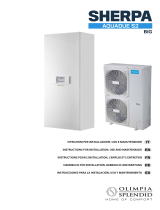 Olimpia Splendid Sherpa AQUADUE S2 Installation guide
Olimpia Splendid Sherpa AQUADUE S2 Installation guide
-
Olimpia Splendid Bi2 Wall TR User manual
-
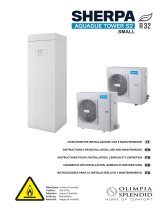 Olimpia Splendid Sherpa AQUADUE TOWER S2 Manuale d'installazione
Olimpia Splendid Sherpa AQUADUE TOWER S2 Manuale d'installazione
-
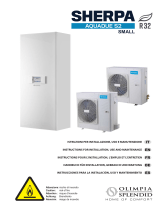 Olimpia Splendid SHERPA AQUADUE S2 E-Serie Installation guide
Olimpia Splendid SHERPA AQUADUE S2 E-Serie Installation guide
-
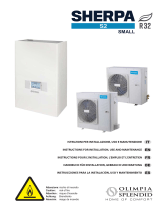 Olimpia Splendid Sherpa S2 Manuale d'installazione
Olimpia Splendid Sherpa S2 Manuale d'installazione
-
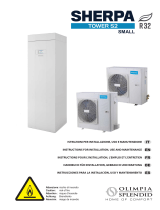 Olimpia Splendid Sherpa TOWER S2 Manuale d'installazione
Olimpia Splendid Sherpa TOWER S2 Manuale d'installazione
-
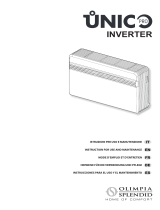 Olimpia Splendid Unico Pro Inverter 12 HP A User manual
Olimpia Splendid Unico Pro Inverter 12 HP A User manual
-
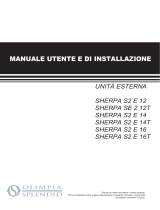 Olimpia Splendid Sherpa AQUADUE S2 Manuale d'installazione
Olimpia Splendid Sherpa AQUADUE S2 Manuale d'installazione
-
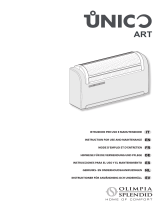 Olimpia Splendid Unico Art User manual
Olimpia Splendid Unico Art User manual
-
Olimpia Splendid Unico Tower Inverter User manual
Other documents
-
DAB E.SYBOX MINI Instruction For Installation And Maintenance
-
DAB e.sybox 30/50 Instruction For Installation And Maintenance
-
Comet YB 150 User manual
-
Goal Zero Sherpa Inverter (110V) User guide
-
Master BC60 4140.366 E18R7 Owner's manual
-
DAB S4 AMEIRA User manual
-
Ariston Andris Owner's manual
-
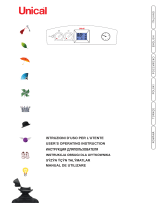 Unical KONm User manual
Unical KONm User manual
-
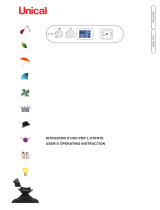 Unical KUTter B inox User manual
Unical KUTter B inox User manual
-
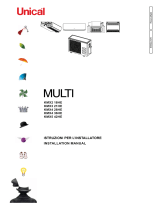 Unical KMX HE - Outdoor Units Installation guide
Unical KMX HE - Outdoor Units Installation guide


































































































